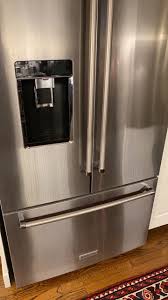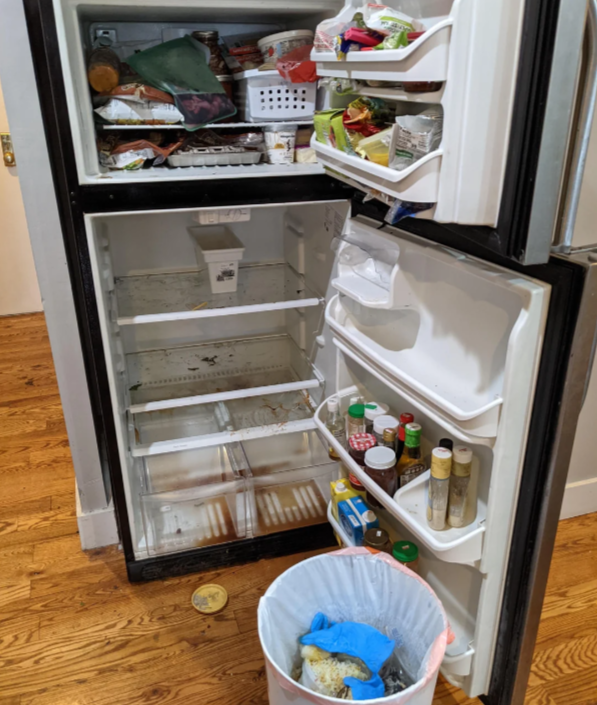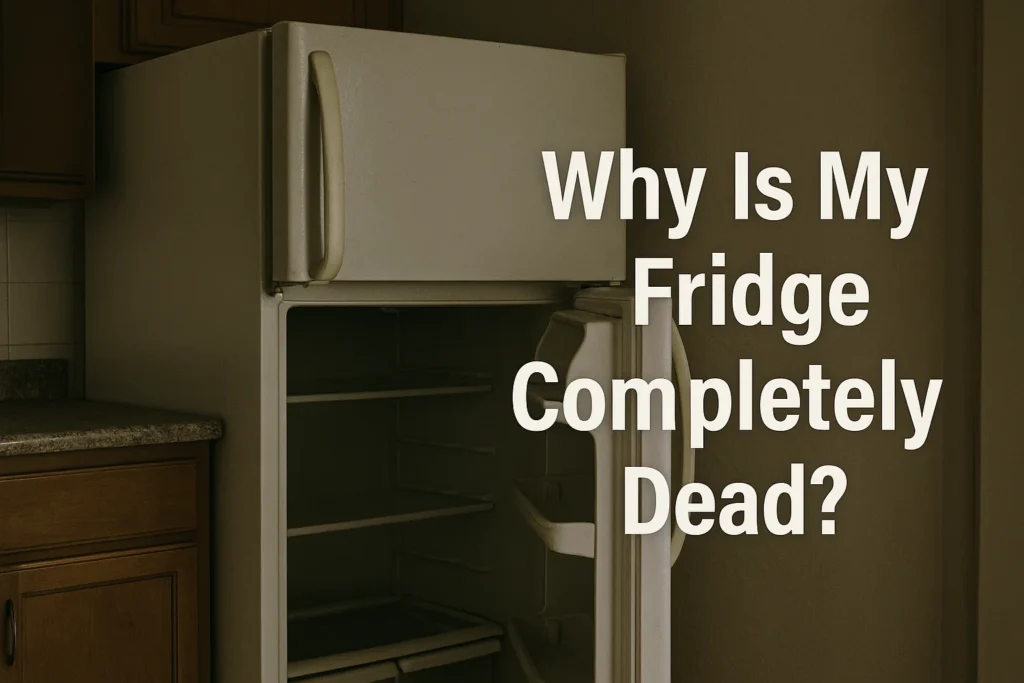When a refrigerator goes stone-silent—no light, no hum, nothing—it’s stressful. Food is on the line, and so is your schedule. The good news: many “dead” fridges are brought back by simple power and control checks you can do in minutes. Below is a clear, no-nonsense guide to pinpoint the fault fast, plus when to call a pro for same-day fridge service if it’s beyond DIY.
First: Safety + Triage
- Unplug before you touch anything. If you need to test power, plug in only for that step.
- Keep the doors closed while troubleshooting to preserve the cold.
- Have a small lamp or phone charger handy—you’ll use it to test outlets.

60-Second Checks (The “Is It Really Dead?” Test)
- Test the wall outlet.
Plug in your lamp/charger. If it doesn’t power on, the issue may be the outlet, not the fridge. - Reset GFCI and check breakers.
Kitchens often use GFCI outlets. Press RESET on any tripped GFCIs on that circuit and check your electrical panel for a tripped breaker. - Confirm the plug is fully seated.
Heavy fridges can tug cords loose. Slide the unit carefully and reseat the plug. - Look for a wall switch controlling the outlet.
Some outlets are tied to a light switch (odd, but common). Flip nearby switches. - Inspect the power cord.
Nicks, crushed insulation, or burn marks are red flags. If damaged, stop and call a pro.
If power checks pass and the fridge is still lifeless, move on.
Quick Decision Tree: What “Dead” Looks Like
- No lights + no sound → Think power path (outlet, breaker, cord), on/off control, demo/Sabbath mode, or the main control board.
- Lights on, but no hum/fans → Likely settings, start relay/overload, control board, or compressor not starting.
- Clicks every few minutes, then silence → Often a start relay/overload issue on the compressor.
Common Causes & What You Can Do
1) Tripped GFCI, Bad Outlet, or Breaker Issue
Signs: No interior lights, no sound; other devices on the same outlet also dead.
Fast Fixes:
- Press RESET on GFCI outlets on the same counter run.
- Flip the breaker fully OFF, then ON to reset.
- Try a different outlet (with a heavy-duty extension cord, temporarily) to confirm the fridge itself isn’t the problem.
If a different outlet works, have an electrician address the original receptacle or circuit. Don’t leave the fridge on an extension cord long-term.
2) Hidden Power Switch, Demo Mode, or Sabbath Mode
Signs: Unit looks off but control panel might still respond. Some models have an internal power switch or showroom (“demo”) setting.
Fast Fixes:
- Open the user controls: look for Power, Cooling On/Off, Sabbath, or Demo labels. Toggle Cooling ON.
- Unplug for 5 minutes, then plug back in to reset logic.
- If buttons beep but cooling stays off, check the manual for exiting demo/Sabbath. When in doubt, a full reset often helps.
3) Damaged Power Cord or Loose Connection
Signs: Cord feels hot, looks crushed or chewed; intermittent power when you wiggle it (don’t keep doing that).
Fast Fix: Stop using it. Replacing a refrigerator power cord is straightforward for a technician and inexpensive compared to board/compressor work.
4) Faulty Door Switch (Less Common for “Completely Dead”)
Signs: Interior light never turns on even with known-good power.
Reality check: A bad door switch usually won’t kill the whole fridge, but it can confuse diagnostics. If your outlet is good and the light still won’t come on, note it—it helps a tech zero in.
5) Start Relay / Overload Protector Failure
Signs: You hear a click, slight buzz, then silence, cycling every few minutes; sometimes lights work but compressor never starts.
Fast Fixes (basic):
- Power-cycle the fridge (unplug 5 minutes).
- If accessible on your model, remove the relay/overload from the compressor and smell for a burnt odor. Any charring or rattling in the relay means it’s likely bad.
Replacement is quick for a pro and often far cheaper than a compressor.
6) Main Control Board or Internal Fuse
Signs: Verified good outlet, no response from panel or lights; no fan noise; no life at all.
Fast Fix: Control boards are sensitive and pricey. DIY board swaps can work, but misdiagnosis is common. If power path checks out, this is a call-a-pro moment.
7) Compressor Failure (Least Likely, Most Expensive)
Signs: Lights and fans may run, but compressor won’t start or trips immediately; sometimes warm cabinet and steady “not cooling” alarms.
Fast Fix: Don’t guess—this needs professional testing (amperage, windings, refrigerant state). On older units, replacement may not be economical.
A Simple 10-Minute DIY Workflow
- Outlet test → lamp/phone charger.
- GFCI/Breaker reset → full reset.
- Re-seat plug and inspect cord.
- Control panel → Cooling ON; exit demo/Sabbath; power-cycle 5 minutes.
- Listen for fans/compressor → any clicks/buzzes?
- Note symptoms → lights/no lights; clicks/no clicks; fans/no fans.
- If still dead after good-power confirmation → likely board/relay → call a technician.
Keep notes (even quick ones): model number, what you tried, and exact symptoms. Techs love that; it reduces time on site.

What Not to Do
- Don’t bridge or bypass safety devices (relay, overload, fuses).
- Don’t pierce any sealed lines or “top up” refrigerant yourself.
- Don’t keep power-cycling every minute—let capacitors discharge for several minutes between attempts.
When to Repair vs. Replace
Consider age, overall condition, part availability, and energy efficiency. A failed relay or simple control issue? Usually worth fixing. A failed compressor on a very old unit? Replacement might make more sense. If you’re on the fence, get a written estimate—a good tech will outline parts, labor, and timeline clearly.
Need It Fixed Today?
If you’re in New York City and need urgent refrigerator service, you can book fridge repair with a local technician. They handle diagnostics and common part swaps (relays, boards, fans) the same day in many cases.
